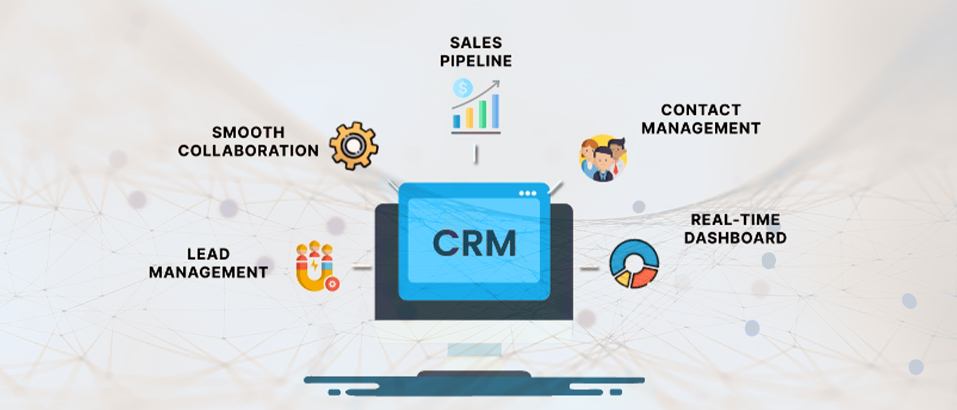In the current fast-paced business landscape, sales teams face constant pressure to excel, including lead generation, qualification, deal closure, and customer relationship management. With so many tasks to handle, it’s easy to get overwhelmed, leading to lost opportunities and decreased revenue. That’s where Salesforce automation tools come in.

Salesforce is a cloud-based CRM platform that offers a wide range of automation tools to help businesses optimize their sales process. These tools are designed to streamline workflows, increase productivity, and improve collaboration between sales teams and other departments.
In this blog, we’ll explore how you can use Salesforce automation tools to streamline your sales process, boost productivity, and drive more revenue.
How can Salesforce Automation Tools streamline your business’s Sales Process?
Salesforce, as one of the most widely used customer relationship management (CRM) systems globally, is utilized by companies of all sizes to oversee their sales operations. However, to truly optimize your sales process and drive more revenue, you need to make the most of Salesforce’s automation tools.

Here are some practical tips and best practices you can implement using Salesforce automation tools:
- Lead Generation and Qualification:
The first step in any sales process is to generate leads. However, not all leads are created equal. Some leads are more qualified than others, meaning they are more likely to buy from you. That’s where lead scoring comes in.
Lead scoring entails giving a score to each lead based on their interaction level with your company. You can use Salesforce’s lead scoring tool to automate this process. The tool analyzes a lead’s behavior, such as website visits, email opens, and downloads, and assigns a score based on their level of engagement.
This score helps you prioritize your leads and focus your efforts on those that are more likely to convert. By using lead scoring, you can increase your chances of closing deals and reduce the time and resources spent on unqualified leads. - Sales Process Automation:
Once you have generated and qualified your leads, it’s time to move them through the sales process. This is where sales process automation comes in. You can use Salesforce’s workflow automation tool to automate your sales process and move leads through different stages of the sales funnel.
For example, you can create workflows that automatically send follow-up emails to leads, assign tasks to sales reps, and update records in the CRM. Through task automation, you can minimize the possibility of human error and save valuable time. You can also ensure that your sales process is consistent and standardized, leading to better outcomes. - Sales Forecasting:
Sales forecasting involves estimating future revenue and pinpointing potential obstructions in the sales pipeline. Salesforce’s sales forecasting tool allows you to generate revenue forecasts based on historical data and current trends. This tool helps you make informed decisions about resource allocation, product development, and marketing.
You can also use sales forecasting to identify potential bottlenecks in your sales process. For example, if you notice that leads are getting stuck in a certain stage of the sales funnel, you can take steps to address the issue and move them through the funnel more efficiently. - Collaboration and Communication:
Sales teams need to work closely with other departments, such as marketing, customer service, and finance. However, it’s not always easy to keep everyone on the same page. Salesforce’s collaboration and communication tools can help you improve communication and collaboration between sales teams and other departments.
For example, you can use Chatter, Salesforce’s enterprise social network, to share information, collaborate on projects, and get real-time updates on sales activities. You can also use Salesforce’s integration with email and calendar apps to schedule meetings, send emails, and manage your sales pipeline. - Reporting and Analytics:
Finally, reporting and analytics are essential for optimizing your sales process. Salesforce’s reporting and analytics tools allow you to track your sales performance and make data-driven decisions.
For example, you can use Salesforce’s reports and dashboards to track the progress of leads through the sales funnel, measure the effectiveness of your sales and marketing campaigns, and identify areas for improvement.
Click here, to find out more about the ways Salesforce can help businesses protect their data.
Conclusion:
In conclusion, Salesforce automation tools can help businesses optimize their sales process, increase productivity, and drive more revenue. From lead generation and qualification to sales process automation, sales forecasting, collaboration and communication, and reporting and analytics, there are a variety of tools and features that can benefit sales teams of all sizes and industries.
By implementing these tools and following best practices, sales teams can improve their sales process, close deals faster, and ultimately increase revenue. With the power of Salesforce automation tools, businesses can take their sales strategy to the next level and stay ahead of the competition.
As the business environment continues to evolve and become more competitive, leveraging the power of Salesforce automation tools has become increasingly important. So, whether you’re a small business owner or a sales manager at a large corporation, don’t miss out on the opportunity to streamline your sales process with Salesforce automation tools.
